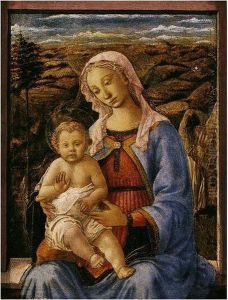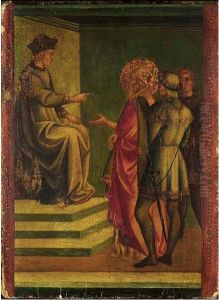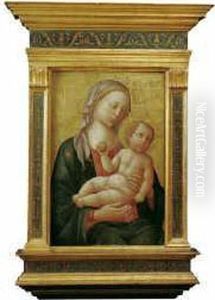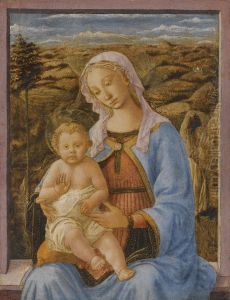Francesco Stefano Di Pesellino Paintings
Francesco Stefano di Pesellino, also known simply as Pesellino, was an Italian painter of the early Renaissance period. He was born in Florence in 1422 and was the grandson and adopted son of the painter Giuliano Pesello, from whom he acquired the name Pesellino. His biological father was Stefano di Francesco, a painter and a collaborator of Pesello. The artistic environment in which he grew up played a crucial role in shaping his career as an artist.
Pesellino was an apprentice in his grandfather's workshop, where he gained a solid foundation in the artistic traditions of the time. After his grandfather's death, he inherited the workshop at a young age, which put him in a position to work on various commissions and establish his reputation in Florence. He became known for his narrative skills and his ability to imbue scenes with emotional depth and vitality. His style was influenced by his contemporaries, such as Fra Filippo Lippi, Paolo Uccello, and the Pollaiuolo brothers, and he was part of the generation of painters that contributed to the development of the Florentine school of painting.
Despite his short life, Pesellino left behind a body of work that was highly esteemed by his patrons and fellow artists. He was particularly adept at small-scale devotional panels and predella scenes, the latter being the narrow panels below the main scenes on altarpieces. His compositions often featured intricate details, elaborate landscapes, and a sophisticated use of color. Some of his notable works include the 'Trinity Altarpiece' and the 'Pistoia Santa Trinita Altarpiece'. Pesellino's work reflects the transition from the Gothic style to the more naturalistic approach of the Renaissance.
Pesellino died at the young age of 35 in 1457. Although his career was brief, his influence persisted, and his works continued to be appreciated for their charm, narrative ability, and the harmonious blending of elements from various influential Florentine artists. His contribution to the Renaissance was significant, particularly in enriching the tradition of narrative painting and the development of altarpiece design.



